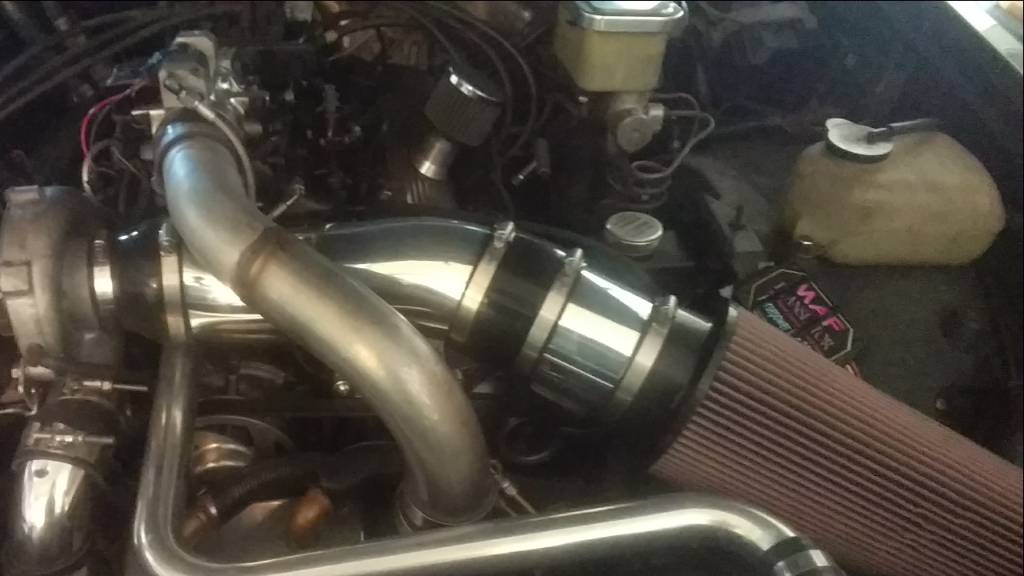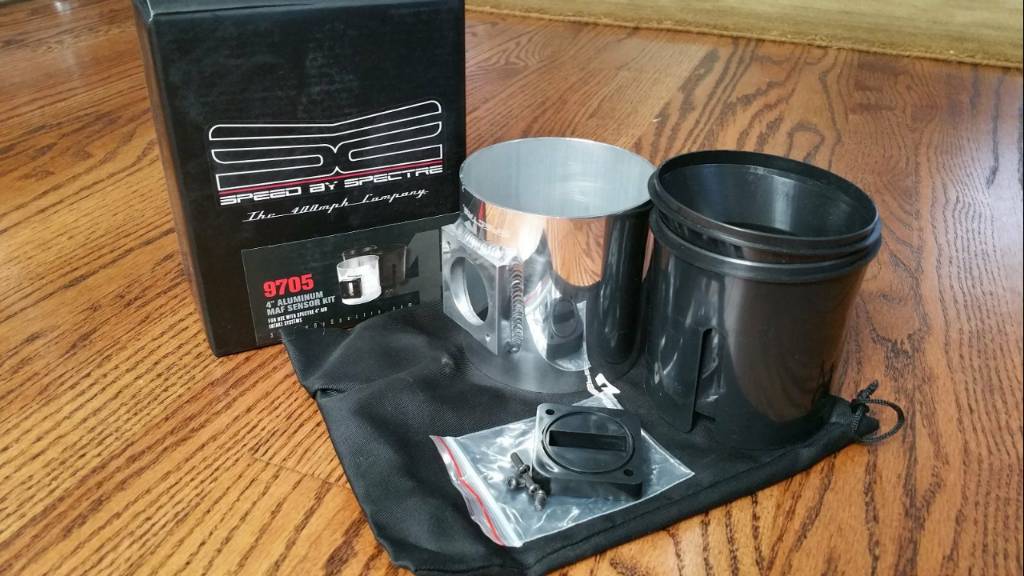Rahob
Member
- Joined
- Jul 14, 2013
- Messages
- 77
Thinking ahead here on a project that I have yet to start. (I'm coming out of a few years of hibernation) But trying to debate this over on my head, and I know... it's a topic that's been beat to death over the years, and one I'm probably way overthinking. Cold air intake routed behind the headlights vs. open element under the hood. I already know about the argument of added length of tubing and bends of cold air intake equal more restriction but for cooler denser air, which equals more air as it enters into the engine heating up and expanding.
Now for what I've been wondering, debating and contemplating, looking at it from the under the hood open element point of view. Less friction from a short intake tube and less bends equals more air through the system... essentially being the same amount of volume.. Or more? amount of air that would be coming from the cooler condensed air once into the engine? (If all other variables were exactly the same, filter size, ambient temperature, etc.)
I've read about every article I've found on the subject, watched the video "chasing air molecules" with Richard Clark, and read all the debates in the forums, and I haven't got a clear answer (and I'm not sure there might even be one). I'm sure I'm overthinking this GREATLY given I have no plans to be on the tracks every weekend, just a Sunday driver and some occasional fun on a back road. I just want to squeak out the greatest potential with the littlest modifications. (Like Richard Clark said "3% here, 3% there, adds up").
Also, on top of that, I've read about adding the MAF in the up-pipe, but I don't believe that would effect flow? According to the article the vehicle performed better, I just feel leery putting the MAF sensor right before the intake.. It feels like with my luck the element would break off the sensor then get sucked into the engine and then I'd have to replace an entire engine instead of just a turbo, if it were to happen on the MAF tube. And while speaking of flow, I've read about turbulence in the MAF pipe after the filter which might cause issues for the MAF sensor.. So is it better not to mount a MAF sensor directly after a air filter, but to add a little tubing then the sensor? Or would it be fine after the air filter as long as the MAF screen is not removed? ALSO could be TOO BIG of an intake pipe???? From what I've read, since a larger pipe has less velocity (specifically idle and regular driving) it could give bad readings on the MAF sensor? Has anyone done any testing on this? I'm asking because I'd like to go from stock MAF to 4" pipe with LS1 sensor. So far before my GN went into hibernation, I changed the stock intercooler for a duttweiler neck stock. RJC power plate, and blocked off the throttle body heater lines. (Just with those improvements I noticed a seat of the pants difference in power)
My next plans and what I'm halfway saved for is RJC 3" downpipe along with their 3" exhaust. Over the future I plan on doing more things when money is good which would justify a bigger MAF pipe. MAF intake being the next upgrade after exhaust.
If you made it this far, thank you for taking your time, you all earn 5 horsepower per question answered I know there are many questions I asked, I appreciate any opinions and hard data results! Thanks!
-Rob
Now for what I've been wondering, debating and contemplating, looking at it from the under the hood open element point of view. Less friction from a short intake tube and less bends equals more air through the system... essentially being the same amount of volume.. Or more? amount of air that would be coming from the cooler condensed air once into the engine? (If all other variables were exactly the same, filter size, ambient temperature, etc.)
I've read about every article I've found on the subject, watched the video "chasing air molecules" with Richard Clark, and read all the debates in the forums, and I haven't got a clear answer (and I'm not sure there might even be one). I'm sure I'm overthinking this GREATLY given I have no plans to be on the tracks every weekend, just a Sunday driver and some occasional fun on a back road. I just want to squeak out the greatest potential with the littlest modifications. (Like Richard Clark said "3% here, 3% there, adds up").
Also, on top of that, I've read about adding the MAF in the up-pipe, but I don't believe that would effect flow? According to the article the vehicle performed better, I just feel leery putting the MAF sensor right before the intake.. It feels like with my luck the element would break off the sensor then get sucked into the engine and then I'd have to replace an entire engine instead of just a turbo, if it were to happen on the MAF tube. And while speaking of flow, I've read about turbulence in the MAF pipe after the filter which might cause issues for the MAF sensor.. So is it better not to mount a MAF sensor directly after a air filter, but to add a little tubing then the sensor? Or would it be fine after the air filter as long as the MAF screen is not removed? ALSO could be TOO BIG of an intake pipe???? From what I've read, since a larger pipe has less velocity (specifically idle and regular driving) it could give bad readings on the MAF sensor? Has anyone done any testing on this? I'm asking because I'd like to go from stock MAF to 4" pipe with LS1 sensor. So far before my GN went into hibernation, I changed the stock intercooler for a duttweiler neck stock. RJC power plate, and blocked off the throttle body heater lines. (Just with those improvements I noticed a seat of the pants difference in power)
My next plans and what I'm halfway saved for is RJC 3" downpipe along with their 3" exhaust. Over the future I plan on doing more things when money is good which would justify a bigger MAF pipe. MAF intake being the next upgrade after exhaust.
If you made it this far, thank you for taking your time, you all earn 5 horsepower per question answered I know there are many questions I asked, I appreciate any opinions and hard data results! Thanks!
-Rob

